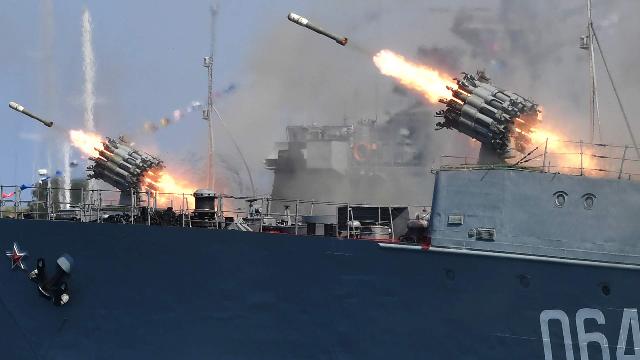Military experts have adapted a number of naval fire systems for use in the ground forces
On the fields of a special military operation, there are options for using naval weapons systems on land chassis. The possibility of using naval naval firepower is primarily available to Marine Corps units. Several examples of military creativity that perform combat work in a special military operation are in the Izvestia review.
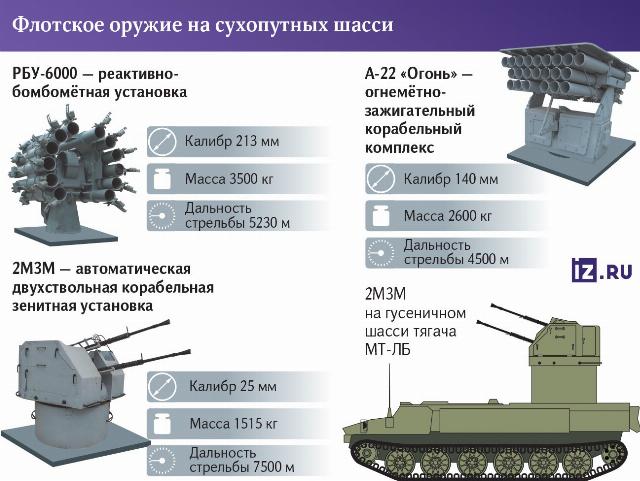 |
| Naval weapons on a land chassis. |
| Source: iz.ru |
Paired power
Stocks of installations, ammunition, a little ingenuity — and you have additional artillery or rocket firepower at your disposal. The first such model was the 2M3M installation with paired 25 mm automatic guns. The installation was placed on the universal tracked chassis of the MT-LB artillery tractor. Thus, we have a universal mobile system that can fire at both air and ground targets. Of course, there are some problems with guidance and targeting — it is only manual for an artillery system of this type. The installation has a light reservation, which protects the calculation from bullets and shrapnel.
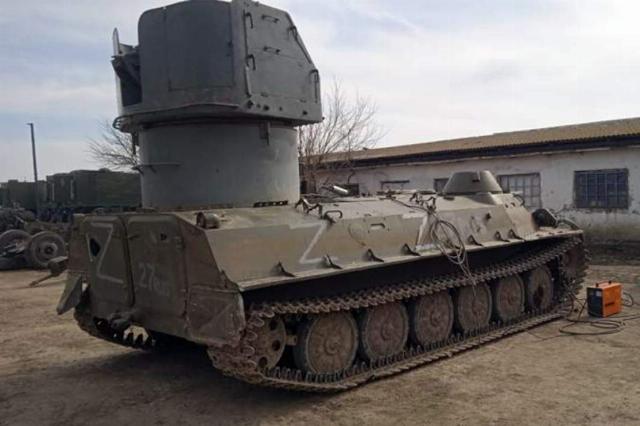
2M3M naval artillery installation on the universal tracked chassis of the MT-LB artillery tractor
Image source: Photo: Social media
Interestingly, this naval installation was used as an anti-aircraft artillery firing point on armored trains created for the defense of areas bordering China in the late 1960s and early 1970s. In addition, in the 1960s and 1980s, this artillery system was installed in the GDR on the IFA W-50 automobile chassis and used as a land mobile air defense system.
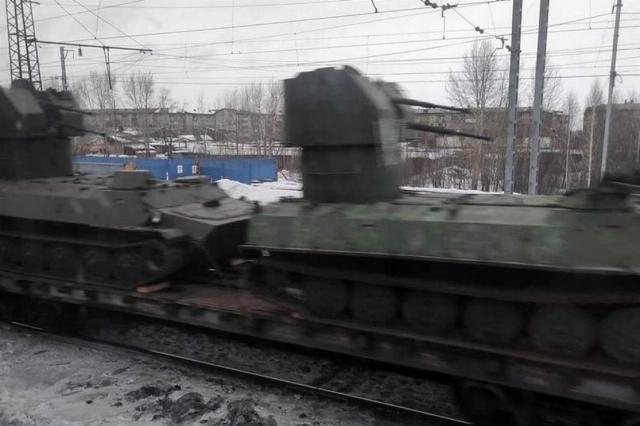
2M3M naval artillery installation on the universal tracked chassis of the MT-LB artillery tractor
Image source: Photo: Social media
The long-lived artillery system was adopted in 1952 and was used on a large number of Navy ship projects. In the early 1950s, the installation was planned to be placed as an air defense system even on large diesel-electric submarines. The calculation of the installation is two people. The total weight is 1500 kg. The combat rate of fire is up to 300 rounds per minute with a range of hitting targets in a straight line up to 3 thousand m. The initial velocity of the projectile is 900 m/s. The capabilities of 25 mm shells, of course, are inferior to 30 mm guns, but at times exceed the effectiveness of machine gun fire. The only question is the exact guidance.
Effective "Fire"
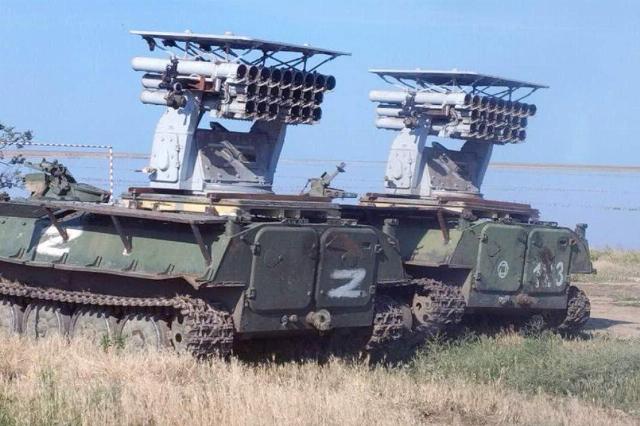
Naval multiple launch rocket system (MLRS) A-22 "Fire" on the universal tracked chassis of the MT-LB artillery tractor
Image source: Photo: Social media
The second system that was seen in the area of the SVO was the A-22 "Fire" naval multiple launch rocket system (MLRS). MLRS of this type was created in the 1980s to support amphibious assault and defeat targets ashore. With 22 guides, it is very similar in type of application to the Grad missile system, but uses missiles of a larger caliber — 140 mm. The package of guides can be rotated 360 degrees in azimuth. The guidance and combat effectiveness of this rocket and artillery system are the same as those of the Grad MLRS - that is, by installing a package of guides at a certain elevation angle. The accuracy and accuracy of the fire is ensured no worse than that of the Grad. The range of ammunition includes both high-explosive fragmentation and incendiary rockets. The range of the installation is from 800 m to 4.5 km. In the navy, such installations form the basis of firepower, for example, large amphibious hovercraft of the Zubr type. Such systems, when deployed on a land-based MT-LB, can be used as mobile MLRS of the battlefield and provide additional fire capabilities to units of the Marine Corps and ground forces.
The "Dragon" from the depths
The third system, which successfully fights in the SVO zone, appeared in Marine units in 2023. This is the RBU-6000 Smerch-2 rocket launcher, which is installed on different models of land chassis — MT-LB, repair chassis of T-80 tanks, cars of the Ural-4320 type. In its maritime life, this installation has been and remains the main anti-submarine armament of cruisers, destroyers, large and small anti-submarine ships, frigates, corvettes and patrol ships. The main task of the RBU is to fire reactive depth charges (RGB) at the enemy submarine detection area. But if the depth charges are modified with the possibility of detonation from contact with any surface, then we will get an installation adapted for use on land targets.
The RBU-6000 was adopted by the fleet in 1961 and is equipped with a package of 12 guides for 212 mm caliber rocket bombs, the position of which is changed in space using electric drives. Circular guidance is a 180 degree sector. The weight of the curb unit is 3100 kg. The range is from 300 to 5800 m. The mass of the projectile is 113 kg, of which 23 kg is accounted for by explosives. These are very powerful projectiles-bombs that can cause serious damage to fortifications, lightly armored vehicles and enemy manpower.
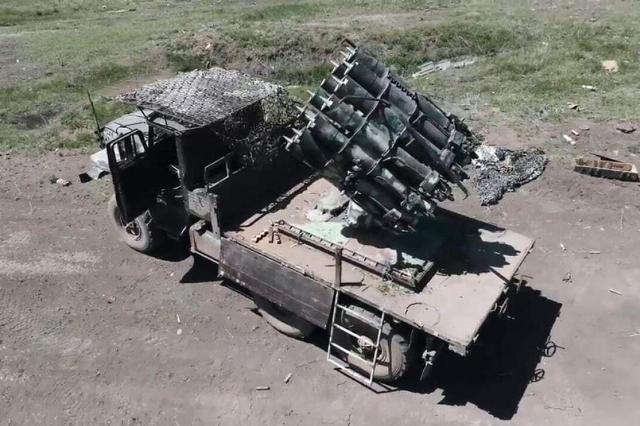
RBU-6000 "Smerch-2" shipboard jet bomb launcher on the chassis of the Ural car
Image source: Photo: Social media
The main problem with the land version of the RBU-6000 is, of course, targeting. When used on a ship against a submarine, the installation fires at an area target, since the exact location of the boat is not known. When used on land for aiming, you will have to calculate the angles of vertical guidance of the installation or aim "by eye". Of course, no one expects high-precision weapons capabilities from MLRS, but the accuracy of the naval bomb is obviously lower than that of the Grads.
Nevertheless, systems with RBU-6000 are used in the area of their own quite massively. One of the reasons is the availability and large stocks of installations and ammunition for them. Ammunition is being refined by front—line craftsmen - the mass of explosives increases, fragmentation elements are added. It turns out to be a heavy and quite deadly projectile, more powerful in destructive power than, for example, the 122-millimeter MLRS Grad missile. For their unusual appearance, a shower of rocket powder sparks during the flight of jet bombs and the powerful destructive effect of the installation, they received the unofficial nickname "Dragon". This is a very serious fire aid in combat work — the only question is the development and accurate guidance of such equipment.
Dmitry Kornev
